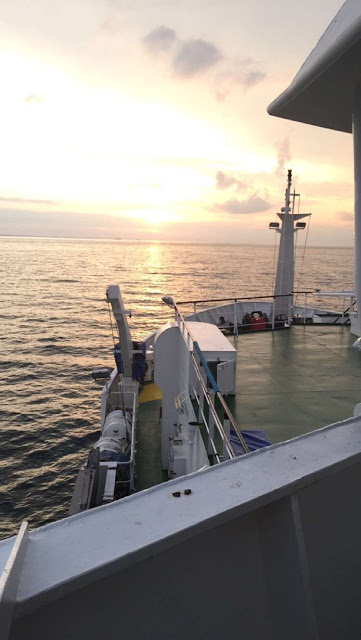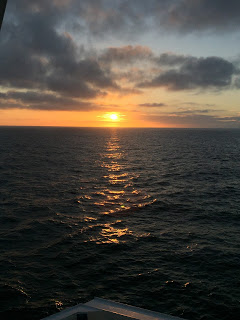Recently I had the fantastic opportunity of conducting marine mammal observing on board the Cefas research vessel, Endeavour. So here is a little blog about what I saw, what its like on a research vessel, and all about marine mammal observing!
I have been working as a remote volunteer for the Sea Watch Foundation since about February this year and have helped them set up a shiny new social media page on instagram (please follow! @seawatchfoundation), and also uploaded sightings data onto their online database. Later on in the Spring, I completed the JNCC MMO training course, STCW basic sea survival certificate & medical and then I was ready to sail the high seas!
In June, I left from Lowestoft on the Endeavour to travel up into the North Sea to conduct marine mammal observing. This was my first experience on board such a large scientific vessel which meant there was so much to learn! Initially the sightings seemed relatively few and far between, but that didn’t dampen my spirits and I was still transfixed on the water waiting to see the glimpse of a dorsal fin breaking the water as soon as the sun was up. Over the week I saw a total of 74 individuals, mainly dolphin species, including white beaked dolphins, and other cetaceans such as Minke Whales, porpoises and common seals. There is a resident population of common harbour seals just off the coast of Norfolk, who tend to congregate on a sandback called Scroby Sands. On our way heading back to port it was awesome to see a massive group of around 50 seals gathered on the sands or swimming close by.
I think my most memorable sighting on this first trip was seeing my first Minke Whale. I remember standing on the vessel bridge wings, topping up my tan and scanning the sea for any sign of activity; perhaps birds diving down to feed or a little ripple that was out of formation of the waves. Using my binoculars I continued scanning, and squealed with delight when I saw the slow and steady appearance of a Minke Whale through the lens. Its tall, curved dorsal fin positioned two thirds down the whales back meant it was instantly identified. This individual was then likely sighted again in the area, as it surfaced after diving.
At the end of August, I set off again on the Endeavour. This time the cruise route was from Aberdeen, heading North towards the Shetland islands, and then returning back to Lowestoft after two weeks at sea. Unfortunately on this longer trip, I saw only 13 individuals during my time away but the sightings I had were all incredible! Species included short beaked common dolphins, bottlenose dolphins and minke whales. A small pod of short beaked dolphins were travelling at speed towards the boat and due to my high viewing point on the vessel, I looked down onto them as they swam underwater between surfacing which was incredible to see. These clear sightings allowed me to easily see their colouration and identify the species. My other most memorable sighting was by absolute chance! The bridge on the Endeavour allows almost 360′ viewing and as I was moving around to observe, I saw bottlenose dolphins displaying their acrobatic abilities for a few moments. Two individuals breached out of the water, including one that brought its entire body vertically out of the water. Having the opportunity to see this natural behaviour in the open ocean was a fantastic sight which makes the hours of observing worth every second!
Collecting data for marine mammals is a brilliant way to help conservation and to get out in the fresh sea air. There are plenty of different tour operators, courses and groups that interested individuals can get in touch with, and I have included some links to these at the end of this post. Another way of contributing to conserving cetaceans is through Adopt A Dolphin.
Thanks for reading & I hope you get involved soon!
Written by Hannah Nutt, volunteer.
For more information please visit the following webpages:
https://www.cefas.co.uk/about-us/facilities/rv-cefas-endeavour/
http://jncc.defra.gov.uk/page-4703
http://www.intelligentocean.com



























Pingback: Sea Watch Foundation » 5 Months at Sea
Pingback: Sea Watch Foundation » Sea Watch Survey on board the CEFAS Endeavour – Aug 2016